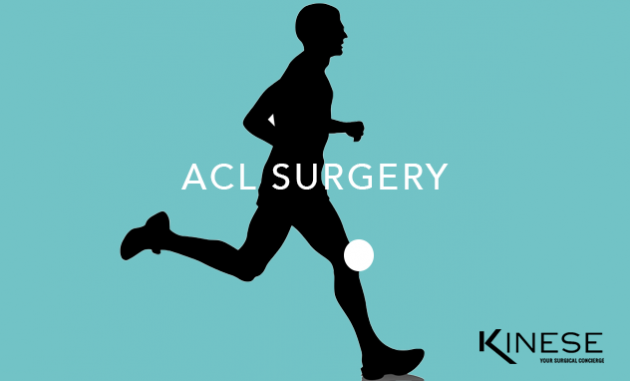FAQ: ACL Surgery

What is ACL Surgery?
The anterior cruciate ligament, or ACL, is one of four ligaments in the knee that provides rotational stabilization and controls the back and forth motion of the knee. Torn ACLs are a common knee injury: more than 200,000 occur each year in the U.S., and about 100,000 of those require an ACL surgery before returning to normal routines.
What Causes It?
An ACL tear or sprain can occur with a sudden change in motion or speed, landing incorrectly while jumping, or pivoting on a locked knee. This injury is all too common among athletes of high demand sports such as soccer, football and basketball. Typically, a popping noise and noticeable weakness in the knee, followed by pain and swelling are the most common symptoms of an ACL tear.
What Happens During Surgery?
An ACL procedure can occur in either an inpatient or outpatient setting. Upon arrival to a surgical facility, patients will be asked to sign an informed consent form demonstrating their understanding of the involved risks and possible complications and acknowledge they will be receiving anesthesia. Once patients are checked into the facility they are most frequently taken to a preoperative or holding area where nurses, your physician and anesthesiologist can review and confirm a patient’s history and current health. This preoperative consultation is designed to insure that an ACL procedure has a safe and effective outcome for the patient. Once a patient is cleared for surgery by multiple parties, anesthesia is administered and the sedated patient is wheeled into an operating room where the ACL procedure is performed.
Most commonly, an ACL surgery is done arthroscopically, utilizing very small instrumentation to perform required repairs. This allows the surgeon to perform the surgery through very small incisions to the knee. However, a more invasive approach, called an open surgical procedure, may also be performed. During the Anterior Cruciate Ligament procedure, tissue from a graft will be affixed between two anchoring devices on each side of the knee joint. This graft may be taken from a different part of the body, typically from the patient’s own knee (an autograft) or from a deceased donor or cadaver (an allograft). Both autograft and allograft will promote ligament healing and ideally be as strong as the original ACL after rest and physical therapy. An ACL surgical procedure typically last 1-2 hours. Patients are typically allowed to return home in the same day as the procedure.
How Long is Full Recovery?
Of course, this varies from person to person. However, the average recovery time is between 8 and 12 months. Physical therapy is an essential component of ACL recovery and programs may last two to six months or longer. Recovery and rehabilitation time is dependent on the patient’s ability to rebuild the tendon and surrounding muscles. Patients need time to heal and should not rush the recovery process.
I am Traveling for Surgery. What Does this Entail?
When traveling for orthopedic surgery it’s important to know that you may not be able to travel home directly after your procedure. Depending on your surgery, some patients have to stay for 3-4 weeks post operation to ensure that they are healthy enough to travel. Even when patients are in a healthy enough condition to travel, they often decide to stay in the area they had their surgery performed in order to attend their follow up appointments with their physician in person. Every patient and surgery is different. Consult with your doctor to determine how long before you will be healthy enough for travel and plan your medical tourism trip accordingly (or allow Kinese to do that part for you!).
